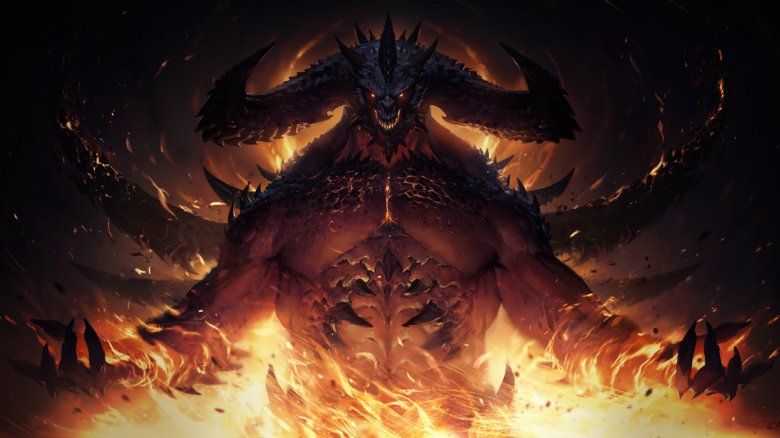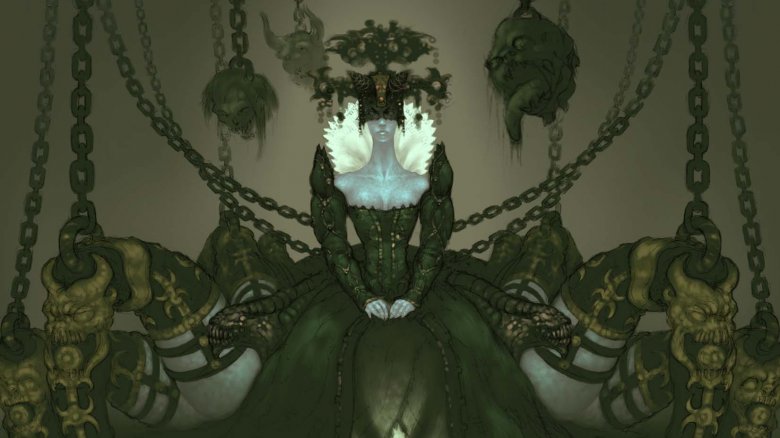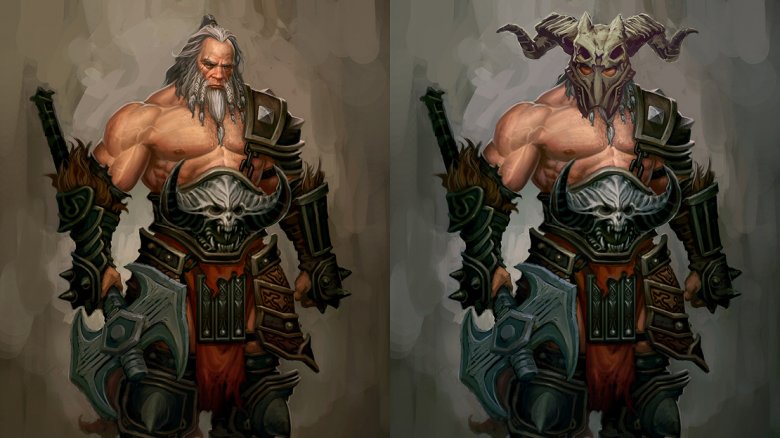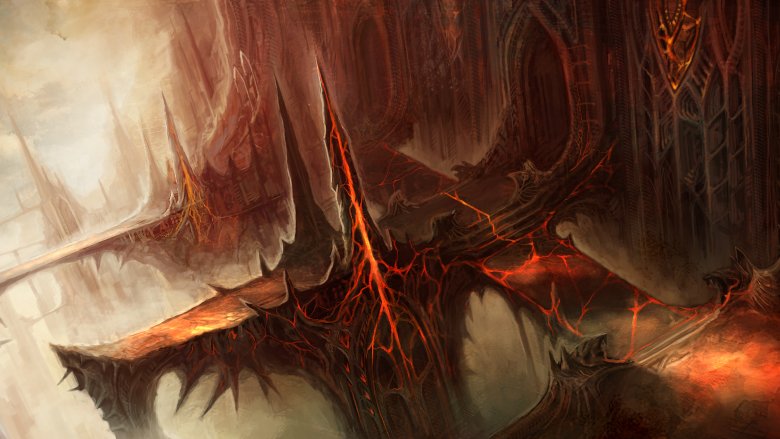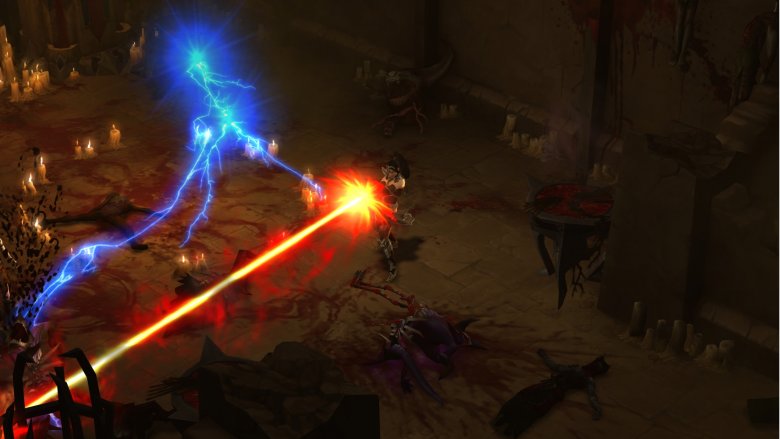Why Blizzard Won't Release Diablo 4
Blizzard Entertainment's Diablo revolutionized the computer role-playing game genre in 1996. While the game retained the fantasy trappings, loot reward systems, and experience progression mechanics of other RPGs, Diablo introduced fast-paced real-time combat to the mix. In addition, maps in Diablo were procedurally generated, meaning every player would experience a slightly different challenge. This kept the game fresh even for players who had poured dozens of hours into the title. Diablo, its Hellfire expansion, its sequel Diablo II, and that game's Lord of Destruction expansion were all smash hits for the still-young studio.
The most recent game in the series, Diablo III in 2012 (along with its later expansions), continued the series' amazing track record. With over 30 million units sold across PCs and consoles, it ranks as one of the best-selling games of all time. Clearly, the market likes going to hell. As one of Blizzard's core properties, there's no doubt that a Diablo 4 is either in discussion or actively in the works at the Irvine, CA studio.
And yet, for all that, it may not be coming anytime soon. Blizzard is one of the most unique developers in the industry, willing and able to iterate through different design prototypes for ages. Where any other studio would want to crank out a sequel for a quick buck, Blizzard has other priorities, and they are keeping Diablo 4 from your screens for the next little while. Here's why Blizzard won't release it — yet.
Diablo: Immortal was supposed to take the pressure off
Years after the release of Diablo III, fans are clamoring for the next entry in the series. While Blizzard will always take whatever time it needs to make their games as high-quality as possible, there's also a pull towards servicing their fan base. In theory, that should be pushing the Irvine studio to rush a new Diablo game out the door, right?
As it turns out, no, or rather, yes. At BlizzCon 2018, the developer shocked their own audience when they did indeed announce a new Diablo, just not Diablo 4. Diablo: Immortal is an upcoming mobile-only game that will distill the core essence of the franchise into a touch-friendly package. Set between the events of the second and third mainline games, it will be a narrative-rich experience with mulitiple familiar classes and a host of dungeons to smash your way through. With Immortal's existence now out in the open, that should have given Blizzard even more breathing room to finish polishing off the fourth mainline game.
"Should have." Unfortunately for Blizzard, they were completely unprepared for the immense backlash that fans fired their way. Time will tell if this is merely yet another entitled outcry that will fade, or a genuine rejection of a Blizzard product (that is half a NetEase product anyway).
Don't forget how long Diablo III took
Blizzard will spend more time crafting a game than nearly any other company in the industry, even if that means working on a single game for over a decade. The Diablo II expansion Lord of Destruction arrived in 2001, and like its predecessors, set the gaming world on fire with its slick design and wicked atmosphere. The team behind the franchise, Blizzard North, figured one expansion was enough, and thus began working on the next full release in the franchise. And they worked on it. And worked on it. And worked on it some more.
For reasons that have never been publicly explained, Blizzard headquarters then decided to shutter their North branch in 2005. Along with that closure, they also decided to cancel all of the work that had been done on the new Diablo game up to that time. The Irvine crew formed a brand-new team to build a new Diablo III from scratch. This game would not see the light of day until 2012, fully seven years after the restart, which itself was begun four years after the original project.
Blizzard has been blessed with a lot of success, so they have enough resources to pour into a single title over this kind of time. And with Diablo III, they proved they were willing to do so. So just because that game turned out to be a blockbuster doesn't mean that Diablo 4 is right around the corner. After all, it's only been a few years since the third game released. To Blizzard, that's less than the blink of an eye.
For Blizzard, 'perfect' is the bare minimum
So why does Blizzard spend so much time on development? Because for them, anything that isn't absolutely perfect won't do. Since the release of the original Warcraft: Orcs & Humans in 1994, the company has built up a reputation for the highest levels of innovation and quality. Their games aren't just 'good,' and they are not just 'influential': they are polished masterpieces that either define or redefine their genres. World of Warcraft. StarCraft. Overwatch. Hearthstone. It's a remarkable legacy.
But even this studio can't strike solid gold every time. Warcraft Adventures: Lord of the Clans was intended to be Blizzard's foray into the adventure game space. But once the project was effectively complete, it wasn't a genre-leading title: it was just another game. Blizzard wouldn't accept that, and cancelled a complete game that was ready to be released and earn money. Very few companies would ever think to do such a thing.
They repeated this trick a few years later with StarCraft: Ghost, a brilliant-looking action game that, much like its protagonist, vanished before our eyes. And of course, there was that original version of Diablo III, which probably would have been another smash hit if Blizzard had only released it. Instead, they cancelled it, and spent another seven years crafting a different game with the same name.
In other words, Blizzard's reputation — not games — is their core product. Anything that might, just might, harm it is cancelled or restarted. So they don't care if Diablo 4 is really great and ready to release soon; they would sooner start over from scratch and make it perfect.
Diablo III's launch failed to launch
Eleven years, who knows how many dollars, and an endless amount of hype all resulted in one thing: the long-awaited release of Diablo III worldwide on May 15, 2012. Needless to say, old-school fans had been looking forward to this moment for over a decade. Even new players who loved Blizzard products were excited to try out the company's latest adventure. They bought the game. They installed it. They hit "Play."
But they lost to the ultimate boss: Error 37.
This was the internal error code for a failure to connect to Blizzard's servers, a pervasive problem upon the game's release. Even though Diablo III had a single-player mode, everyone had to connect to the servers for some reason. And in this case, that meant a whole lot of people couldn't even play the product they'd just purchased. It took weeks for Blizzard to sort out the mess, but by then, a bad taste had been left in the mouths of a lot of dedicated fans. Blizzard's sterling reputation had taken a dent.
Meanwhile, the game's Auction House system also turned out to be a problem. Intended to allow players to easily share loot they didn't want, for money if they so chose, the system instead ruined the overall progression path of the game. Eventually, the system was removed from the game altogether. Another failure for a company that hated that word.
For Diablo 4, Blizzard will want to ensure a smooth player experience, and make sure any problematic systems are cut out before release. That'll take time. And Blizzard, of all companies, won't hesitate to wait if it means getting the game right.
Diablo III's Seasons are still popular
The main campaign for Diablo III isn't wildly long, and even inexperienced players can probably complete it in 15 to 20 hours. In theory, then, this should be the kind of game that you pick up, play, and then put down forever. Not so! Many players have logged hundreds of hours in Diablo III, and keep coming back for more. There are a lot of reasons for this, but one of the biggest is a system called Seasons.
Essentially, a Season is a game-mode that only lasts for a certain period of time. During a Season, a player who opts into the mode will have to start a brand-new character from scratch. This has the effect of setting everyone back to square one: at the start of a Season, everybody runs un-leveled, un-geared heroes again. Blizzard then sets a number of challenges for them to complete, and it's a race to see who among the community, or who among your friends, can complete them first. Since everybody's starting from the same point, the race is one that anyone can win. Meanwhile, Season-specific rewards can only be earned during this period, and never again, so players are incentivized to try to play as much of each Season as they can.
This long-running system has proven to be very popular, and it keeps an old game alive in the hearts of millions of players. Blizzard doesn't need Diablo 4 to keep the brand thriving: Diablo III is doing that work just fine all by itself, even years after its release.
The action genre has changed around them
When the original Diablo burst onto the scene in 1996, it transformed what an action game could be. Fast-paced yet tactical, easy to pick up yet difficult to master, it was a near-perfect distillation of everything action games aspired to become, while simultaneously preserving everything that made RPG games such a sensation. The game led the industry forward, and with Diablo II, was a major factor in bringing games into the 21st Century.
For all its massive success, Diablo III hasn't been nearly as influential. The third game in the franchise retained the top-down, isometric look of its '90s predecessors, keeping the camera way back from the action. While there are other indie titles that use that style as well, usually as an intentional throwback to a bygone era of gaming, there are no AAA experiences that currently use that format. Modern titles, such as God of War or Middle-Earth: Shadow of War, keep the camera close to the main character and the immediate environment. Rather than giving the player a bird's eye view, these games present a visceral ground-level experience. That also allows for far greater detail in the character models and the animations.
Diablo 4, then, will have to reconcile the classic franchise format with these more modern tropes, without alienating old-school fans or potential new players. Otherwise, Diablo will not be a genre-defining series anymore, just a kind of updated relic from another time. Blizzard has no interest in rehashing the past: they want to shape the future. And they will take as much time as they need to hit on a design that does.
The life cycle of Blizzard products has gotten longer
As mentioned above, Blizzard takes an awful long time making their games. But there's a flip side to that coin: Blizzard has been supporting their active roster for longer and longer. StarCraft II is still getting attention from the company, even seven years after its release. World of Warcraft continues its astonishing run, even though it was released all the way back in 2004. And by all indications, Overwatch and its new eSports league is going to be around for a long, long time to come.
To that end, Diablo 4 can't just be a fun game: it needs to be able to support an active fanbase for years. Blizzard may even possibly be looking to make it a long-running game-as-a-service, in which case it may be the only new Diablo game for a decade or more. Building a title that can stand up to that long test of time, and have the infrastructure necessary to constantly push new content, is no small feat: just ask the team that turned the failed Titan project into Overwatch.
While the Seasons system in Diablo III has allowed fans to remain engaged with that game, a full-on service-oriented title is a whole new ballgame. Wedding the game-as-a-service philosophy with the tried-and-true Diablo formula will take a lot of care, attention, and, most of all, time. Plus, building out the systems necessary to maintain such a game over the long term is a large endeavor unto itself. Diablo 4 likely won't be the next Diablo III: it will be, in many respects, a bold new direction for the franchise.
There's been a changing of the guard
In 2016, Diablo III lost its director, Josh Mosqueira. Since taking the reins in 2013, Mosqueira had led many of the face-saving initiatives that rescued the game from itself, such as removing the Auction House. He would naturally be the man to lead the franchise into its next installment. But his departure left a hole behind him, and his replacement would have to get up to speed on the still-ongoing Diablo III before tackling a new project. At a bare minimum, this would have slowed down development, and further added to the production schedule.
Interestingly, while Blizzard has almost certainly hired a new director, nobody really knows for sure! The company never announced if the role was ever filled, or who filled it. Is this person a veteran member of the Diablo III team? A talented director poached from another studio? A mysterious wanderer with a dark past, hellbent on revenge and redemption? We don't know! Whoever it is, that person will have a lot of work to do, and a massive legacy to live up to, and of course, Blizzard's reputation to manage. It's a lot of responsibility. And the best way to handle that responsibility is patience, and time.
Which is yet another reason you won't be seeing Diablo 4 for a while yet.

